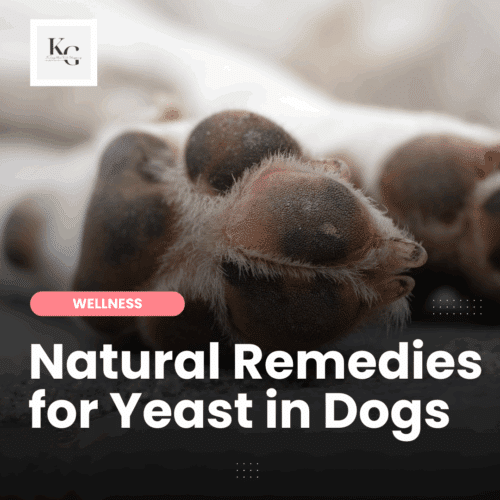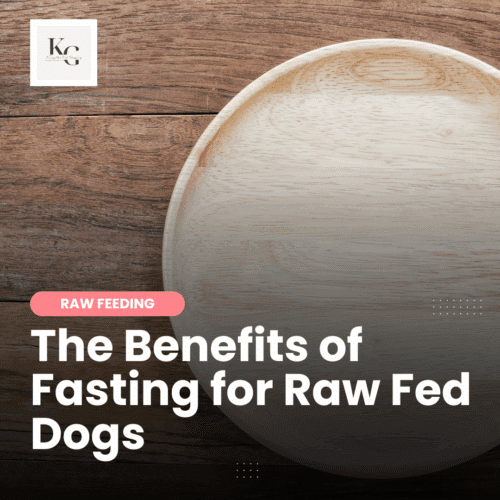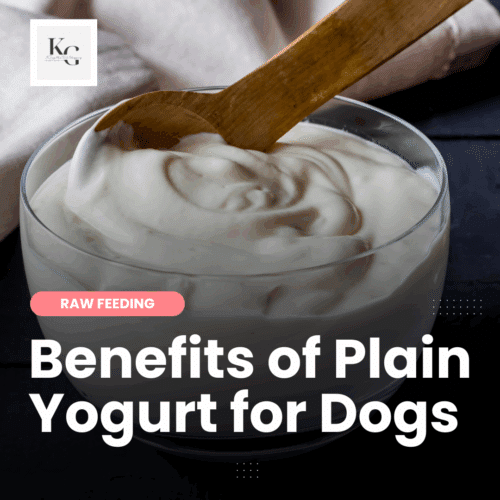Keep the Tail Wagging is supported by pet parents. I occasionally earn a commission (at no additional cost to you) when you click through an affiliate link to one of my favorite products. Thank you for your support. Read More
Fish is a staple in my dogs' diet. I feed it primarily for the omega-3 fatty acids, Vitamin D, and zinc, although fish adds much more to the diet. In this article, I will share what I know about feeding fish to raw fed dogs, including the other seafood I feed to my dogs, where I buy fish and alternatives for dogs that have a fish sensitivity.
Benefits of Feeding Fish and Seafood to Dogs
Fish and seafood can provide several nutritional and other benefits for dogs when included in their diet. Whether you feed raw, homecooked, or kibble – fish is a valuable addition.
- Omega-3 Fatty Acids: Fish, especially fatty fish like salmon, sardines, and mackerel, are rich in omega-3 fatty acids. These essential fatty acids are beneficial for dogs as they support a healthy immune system, reduce inflammation, promote healthy skin and coat, and support brain and eye development.
- Protein Source: Fish and seafood are excellent sources of high-quality animal protein, essential for building and repairing tissues, supporting muscle development, and maintaining a healthy metabolism.
- Joint Health: Omega-3 fatty acids found in fish have anti-inflammatory properties, which can help alleviate joint stiffness and reduce the symptoms of conditions like arthritis in dogs. This can improve mobility and overall joint health.
- Allergy-friendly: Fish and seafood are novel protein sources, meaning they are less likely to cause allergic reactions in dogs with food sensitivities or allergies to common protein sources like chicken or beef. This doesn't mean a dog won't be sensitive to fish and other seafood.
- Nutrient-rich: Fish and seafood are packed with essential vitamins and minerals such as vitamin D, vitamin B12, iodine, selenium, and zinc. These nutrients are necessary for various bodily functions, including immune function, cell growth, and overall health.
- Dental Health: Some fish, like salmon or trout, contain tiny, edible bones that dogs can safely consume when eating whole fish. These bones can provide a natural teeth-cleaning effect as they scrape against the teeth, helping to remove plaque and tartar buildup.
- Weight Management: Fish and seafood are generally low in calories and fat. Including them in a raw diet can help dogs maintain a healthy weight and reduce the risk of obesity-related health issues.
Feeding Fish and Seafood to Dogs
For some raw feeding models, fish and seafood are treated as protein, falling into the 80% of the 80/10/10 ratio. However, the Ancestral raw feeding model calls for 10% fish in a dog's raw food diet.
You can feed fish raw or cooked based on your sourcing, comfort level, and your dog's individual needs. I prefer to feed fish cooked because I watched a video of works in fish and I was never the same. Canned fish, canned oysters, and frozen mussels are cooked. I do feed raw sardines and mackerel on occasion, but it's not common. I will feed fresh salmon after it's been fileted and cooked. Before feeding it to my dogs, I always double check to remove any missed bones.
Fish bones can be a hazard for some dogs. Just as human can choke on a fish bone, so can dogs. In my experience, the bones in raw sardines and mackerel are small and my dogs don't have an issue with them. The bones in canned fish are soft and can be consumed with no issues.
Fish and Seafood I Feed to My Dogs
There are many fish and seafood options for dogs that can be found at local grocery stores, ethnic stores, outlet grocery stores, and more. The seafood on this list are rich in omega-3 fatty acids, which support a healthy immune system, reduce inflammation, promote brain and eye development, and maintain a shiny coat and healthy skin. They are a great source of high-quality protein, which supports muscle development and repair. And they can improve joint health and contribute to a healthy heart. Additionally, the fish on this list contain essential vitamins and minerals that support overall health and are low in calories, making them suitable for weight management.
Sardines
Sardines are an excellent source of protein, omega-3 fatty acids, Vitamin D, calcium, phosphorous, selenium, and B vitamins. These nutrients are vital for various bodily functions, including bone health, immune function, and energy production. Sardines in tomato sauce add additional antioxidants to the diet, including lycopene, which supports eye health, may slow or prevent cataracts, and prevents disease.
Occasionally, I can get fresh sardines through my local raw food co-op or ethnic grocery stores. Mainly, I feed canned sardines to my dogs.
- sardines in water, no salt added – ethnic grocery store, outlet grocery store, Walmart
- sardines in tomato sauce – ethnic grocery store, outlet grocery store, Walmart
- sardines in olive oil – outlet grocery store, Costco, Walmart
My Feeding Guidelines: I feed one can of sardines to each dog. When feeding raw, whole sardines – I chop up one to 1-1/2 fish for each dog. I choose to chop up the fish because this produces less mess when the dogs eat.
Mackerel
Mackerel is rich in omega-3 fatty acids and a great source of high-quality protein. Mackeral is an excellent source of Vitamin D, B12, selenium, phosphorus, potassium, niacin, and magnesium.
Fresh mackerel is similar to fresh sardines in size. I don't feed king mackerel because it's higher in mercury. Primarily, the mackerel in my dogs' diet is canned.
- mackerel in water (brine) – ethnic grocery store, outlet grocery store
My Feeding Guidelines: I split a can of mackerel between my dogs. When feeding raw, whole mackerel – I chop up one to 1-1/2 fish for each dog. I choose to chop up the fish because this produces less mess when the dogs eat.
Wild Caught Salmon
Salmon is a common fish in the Pacific Northwest, but I never feed it raw because of the risk of salmon poisoning with Pacific salmon. Salmon is an excellent source of Vitamin D, B12, selenium, phosphorus, potassium, niacin, and magnesium.
When I can get salmon on sale (or a friend has extra from a fishing trip), I bake the fish, remove the bones, and feed it to my dogs. Primarily, my dogs enjoy canned salmon because fresh salmon is expensive.
- pink salmon in water – outlet grocery store
My Feeding Guidelines: I split a can of pink salmon between my dogs. When feeding cooked salmon, I add a three to four ounces to each dog's dish.
Oysters
I add canned boiled oysters to my meal prep to add more zinc to their diet. I mix the oysters with an 80/10/10 blend of muscle meat, organ meat, and bone, and a base mix. When I find fresh oysters on sale, I bake them for my dogs and add them to their meals. I do not feel comfortable feeding raw oysters to my dogs.
Oysters bring the following nutrients to the diet: omega-3 fatty acids, zinc, iron, copper, selenium, and Vitamins B12, C, D, and E.
- canned boiled oysters – Walmart
My Feeding Guidelines: I add one can of oysters for every 5-7 pounds of muscle meat when mixing up a batch of raw dog food.
Mussels (Blue and Green-Lipped)
Mussels are known for their ability to reduce pain and inflammation, improve mobility, and support joint health for dogs with arthritis. Mussels also feed the good bacteria in the digestive system, supporting gut health. There are two types of mussels I buy for my dogs – blue-lipped and green-lipped mussels. One is known for its high protein content and the other for its anti-inflammatory benefits.
Green-lipped mussels are a great source of omega-3 fatty acids, specifically eicosapentaenoic acid (EPA) and docosahexaenoic acid (DHA). Blue-lipped mussels are an excellent source of protein, supplying all the essential amino acids needed for muscle development and repair. Both are excellent sources of B12, iron, zinc, selenium, and manganese.
- blue-lipped mussels – restaurant supply store, outlet grocery store
- green-lipped mussels – restaurant supply store
- green-lipped mussel powder
My Feeding Guidelines: When feeding mussels, I add a few (5 to 7) to the bowl for each dog.
Feeding Fish and Seafood Dog Treats
The above benefits can be found in air-dried and freeze-dried fish and seafood dog treats; however, this can get expensive. When I can get these treats on sale, or they come in the monthly Real Dog Box, I add them to the diet, but not as my dogs' main source of omega-3 fatty acids.
Omega-3 Fatty Acids When Dogs Can't Eat Fish
While fish is a common source of omega-3 fatty acids for dogs, there are several alternatives you can consider if your dog can't eat fish, several of which are plant-based* and contain alpha-linolenic acid (ALA), which converts to DHA and EPA in a dog's system.
- Algal Oil: Derived from algae, this oil is a plant-based source of omega-3 fatty acids and is a suitable alternative for dogs with fish allergies or sensitivities. Algal oil contains docosahexaenoic acid (DHA) and eicosapentaenoic acid (EPA), two of the most important omega-3 fatty acids.
- Chia Seeds: Chia seeds are rich in ALA omega-3 fatty acids. To improve absorption, you can soak them in water before adding them to your dog's food.
- Flaxseeds: Ground flaxseeds can be added to your dog's meals to provide ALA omega-3 fatty acids. Make sure to grind the seeds before use to enhance digestibility.
- Hemp Seeds: Hemp seeds are another plant-based source of ALA omega-3 fatty acids. They can be ground, then sprinkled over your dog's meals, or incorporated into homemade treats.
- Pumpkin Seeds: Pumpkin seeds are a nutritious option that contains ALA omega-3 fatty acids. You can crush or grind them and sprinkle them onto your dog's food. Feeding too high of a dosage of pumpkin seeds can lead to digestive upset, so start low and only feed this in rotation with other sources.
- Spirulina: This blue-green algae is a nutrient-dense superfood that offers omega-3 fatty acids (EPA and DHA) along with other essential nutrients. It can be found in powder or tablet form.
Organic, pasture-raised chicken eggs are high in Omega-3 fatty acids; however, not as high as fish or some plant-based options. For example, “a 4-ounce serving of salmon (or just one tablespoon of flaxseed) is going to give you six or seven times as much omega-3 as a serving of omega-3 eggs,” according to Scientific American.
Salmon Oil and Omega-3 Supplements
My top five omega-3 supplements are sourced from Adored Beast Apothecary and Life Line Pet Products:
- Adored Beast Potent-Sea Omega-3 | EPA & DHA
- Adored Beast Phyto Synergy | Super Antioxidant
- Life Line Pet Nutrition Wild Alaskan Salmon Oil
- Life Line Pet Nutrition Wild Alaska Salmon & Pollock Oil
- Life Line Pet Nutrition Omega Fish + Hemp Seed Oil
I alternate fish with fish oil supplements in my dogs' diet. I do this because I think variety is important when feeding my dogs, and having various sources equates to always having an option in case one of these products is no longer available. For the supplements, I follow the dosage amounts on the packaging.
I like the Life Line products because the bottles prevent oxidation. I prefer the 8.5 ounce bottles to the larger bottles because I alternate this supplement with whole fish and seafood. By purchasing a smaller bottle, I don't worry about it going bad because I didn't use it fast enough.
My Feeding Guidelines: I don't add omega-3 supplements to a meal that already has fish; I feed these as an alternative. When feeding a low omega-3 fish, I will add fish to one meal and an omega-3 supplement to the second meal.







I’m not sure because I wouldn’t feel comfortable feeding my dogs a fish diet. I only add fish as a side dish, not as the full meal. You may need to reach out to a meal formultor or nutritionist to determine how much is appropriate for your dog.
How do you determine the amount of fish to feed a dog that should weigh between 11-13 lbs. I have a Mini-Poodle, who is at least 5 lbs overweight – she weighs 19 lbs. I want to put her on a raw fish diet. How much should I feed her every day?